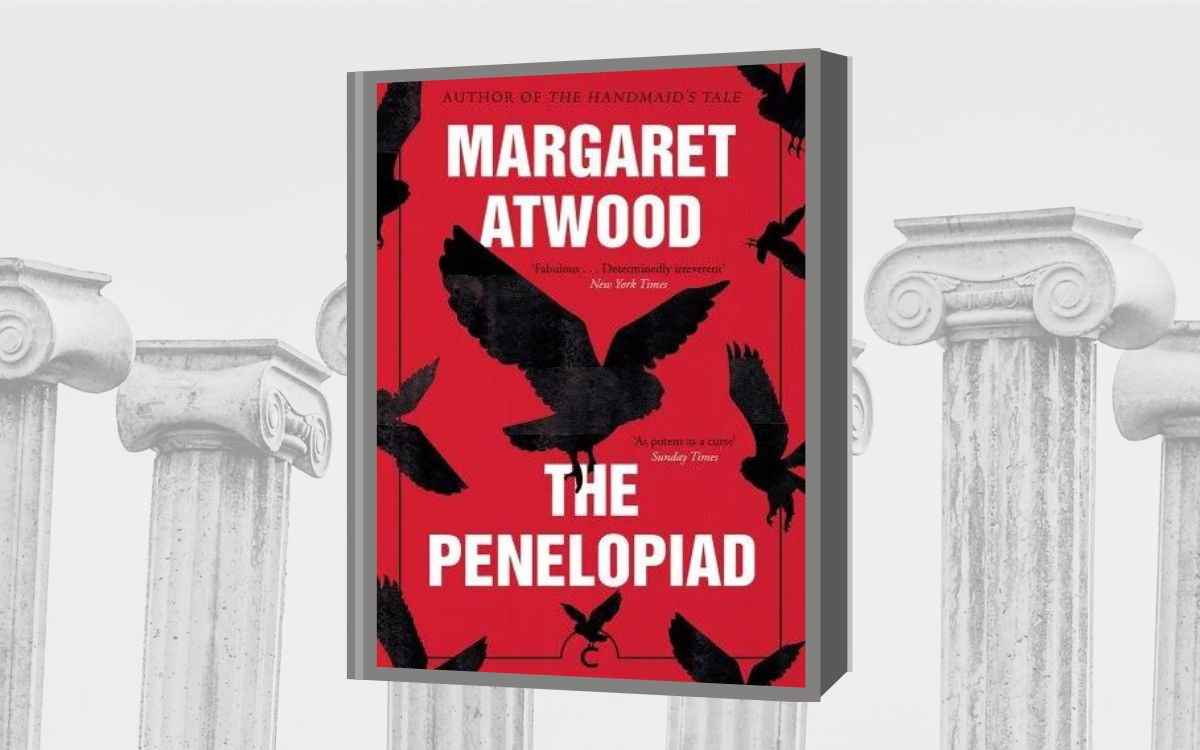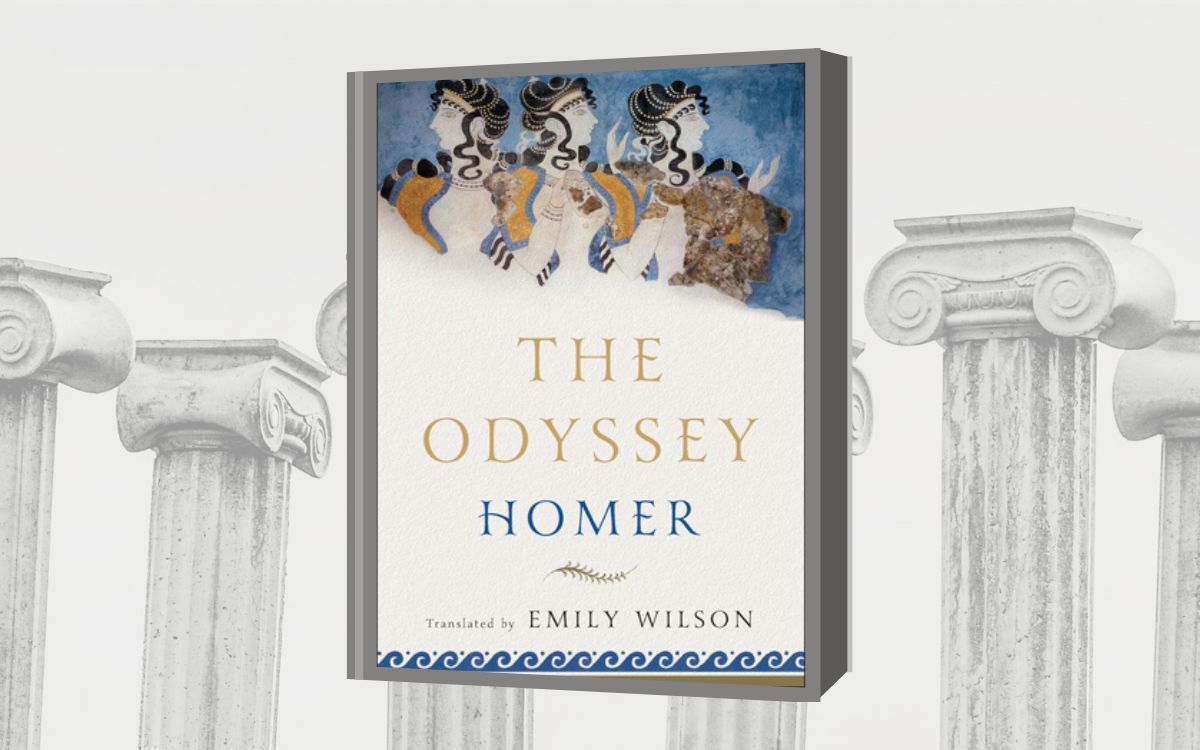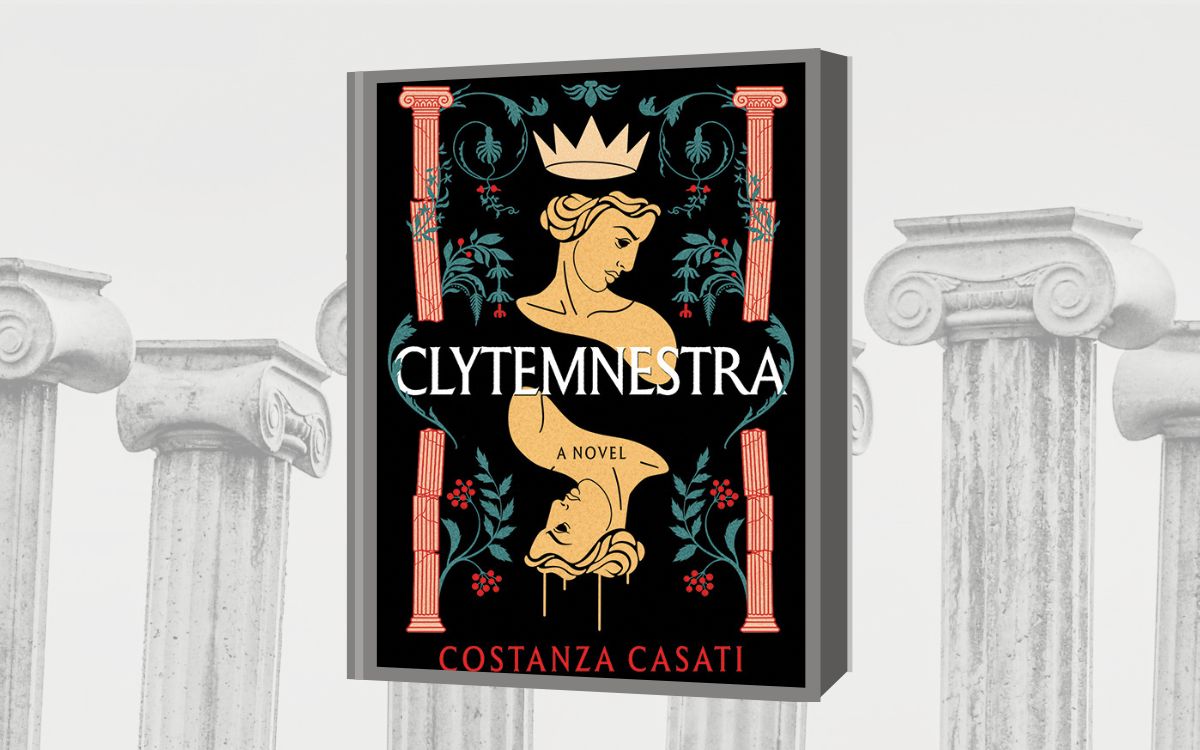Do you know that meme about how if you liked Greek myths as a kid you’re gay now? That’s me.
I’m the classics queer, obsessed with Greek mythology from toddlerhood and this is my list of must-read books about Greek Mythology. A mix of retellings, inspired bys, non-fiction, and translations in here for you to get excited by and run with. Happy reading and may it mark the beginning of a new obsession.
10. The Penelopiad by Margaret Atwood

One of the early feminist retellings, The Penelopiad gets Penelope’s side of the story across from the underworld, where she’s still eternally waiting for Odysseus to come back and actually stay beside her. It examines the ways in which the Greek heroes aren’t actually heroic—just violent and entitled—through the eyes of someone who hasn’t fully unpacked that yet. Her self-perception relies on being a good woman, but she still can’t help but question the more extreme acts of violence perpetrated by her husband. Penelope’s not a likable character, specifically because she hasn’t fully divested herself of this loyalty to the cultural values that dehumanize her, but that’s part of what makes the book so interesting.
9. The Moon Riders by Theresa Tomlinson

An engaging young adult novel about The Trojan War from the perspective of an Amazon girl coming of age in the midst of it. The Moon Riders focuses on the Trojan women and their experiences of the war, granting them personhood and agency that the myths often skimp out on. It addresses the things that were done to them outside of the sources’ patriarchal lens. It’s also a hopeful book about survival and alternatives to kyriarchal violence, that provides a plausible alternative ending for several mythic characters who definitely deserved better.
8. The Odyssey translated by Emily Wilson

Often referred to as the feminist version of The Odyssey, Emily Wilson’s translation really just avoids the additional misogyny not actually found in the text that English language translators usually add in. No translation is bias-free of course but Wilson’s more literal edition is an interesting new lens through which to view the text, especially if you can’t read Ancient Greek well enough to translate it for yourself.
7. The Bacchae and Other Plays translated by John Davie

Euripides is one of my favorite Ancient Greek playwrights largely because his work is so nuanced with a good grasp on human motivations, even in characters outside of his own experience. Scholars are torn on whether he was a misogynist or satirizing Athenian misogyny, and I lean hard toward the latter opinion. Of his plays, The Bacchae is my favorite. With its creeping folk-horror tension as the arrogant, power-hungry, and bigoted ruler of Thebes marches inexorably toward his own destruction.
6. Magic, Witchcraft and Ghosts in the Greek and Roman Worlds by Daniel Ogden

Honestly, you should read everything by Daniel Ogden because his work is top-notch. Magic, Witchcraft, and Ghosts in the Greek and Roman Worlds, is a translated sourcebook with commentary and it focuses on the lesser-known folk side of mythology. The everyday magical practices, superstitions, and folklore that played a part in ordinary people’s lives. It’s fascinating and you’ll learn so much, and it will clarify some things from the more epic myths you’re already familiar with.
5. The Homeric Hymns translated by Susan Shelmerdine

If you really want to understand the Ancient Greek gods, in particular how they were worshipped and how ordinary people related to them, then The Homeric Hymns are essential. It’s where you’ll find the oldest version of the Hades and Persephone myth, as well as other, lesser-known but equally important odes to different gods.
4. Clytemnestra by Costanza Casati

A glorious explosion of female rage, Constanza Casati’s Clytemnestra restores personhood, and humanity, to the daughters and granddaughters of Leda. It’s a dissection of the inequalities of Ancient Greek society, and the cognitive dissonance and absolute lack of empathy shown to the women of its mythology. Clytemnestra rips away the patriarchal narratives that paint a child-killing rapist as a hero, and the avenging mother who killed him as one of the greatest villains of their time. It’s immensely satisfying if you’ve read the source material and been infuriated by its misogynistic treatment of women, but if you haven’t it’s a good place to start.
3. The Amazons by Adrienne Mayor

You’d be forgiven for thinking The Amazons were just as mythical as the centaurs and cyclopes they share the Acropolis friezes with, but they were in fact a real people—just grossly misrepresented to act as a cultural other in Greek society. In The Amazons, Adrienne Mayor outlines the history of the real Amazon warrior women of the ancient world; members of a nomadic horse culture known as the Scythians who inhabited the Eurasian steppes. Whose women possessed significantly more power and autonomy than their Greek counterparts and frequently fought as warriors alongside their men.
2. Ecstasia by Francesca Lia Block

A delirious, surreal novel in classic Francesca Lia Block style, Ecstasia follows the adventures of Calliope, Rafe, Paul, and Dionisio, who make up the most popular band in Elysia, a glimmering pleasure city in the midst of the desert. Filled with all the hedonistic delights you could ever want, Elysia is a city for the young, because once you start to age something starts calling you down, “down, down, to the underground.” Former denizens of Elysia live there in the dark, their bodies wrapped in bandages so they don’t have to see their own aging faces. Drawing on Orpheus and Eurydice, as well as the lure and pitfalls of Los Angeles and Hollywood culture, Block weaves a lyrical, beautiful story about love, loss, and survival, in a post-apocalyptic setting alive with Greek myth and magic.
1. Ties That Bind by Kika Hatzopoulou

I’m obsessed with Ties That Bind and the world Hatzopoulou has created. Another dystopian, post-apocalyptic, Greek mythology novel it’s set in a world completely reshaped by climate collapse where the descendants of long-dead gods walk the earth. In the midst of this, Io Ora—a descendent of the Fates and a private detective—has to solve a string of murders leading to a complex political mystery. All while dealing with the ethical and emotional fallout of being partnered with a man she’s tied to by a string of fate, a soulmate if you will, bound to her before they’d ever met.
(featured image: W. W. Norton & Company, Princeton University Press, Sourcebooks)










Published: Aug 30, 2023 10:25 am